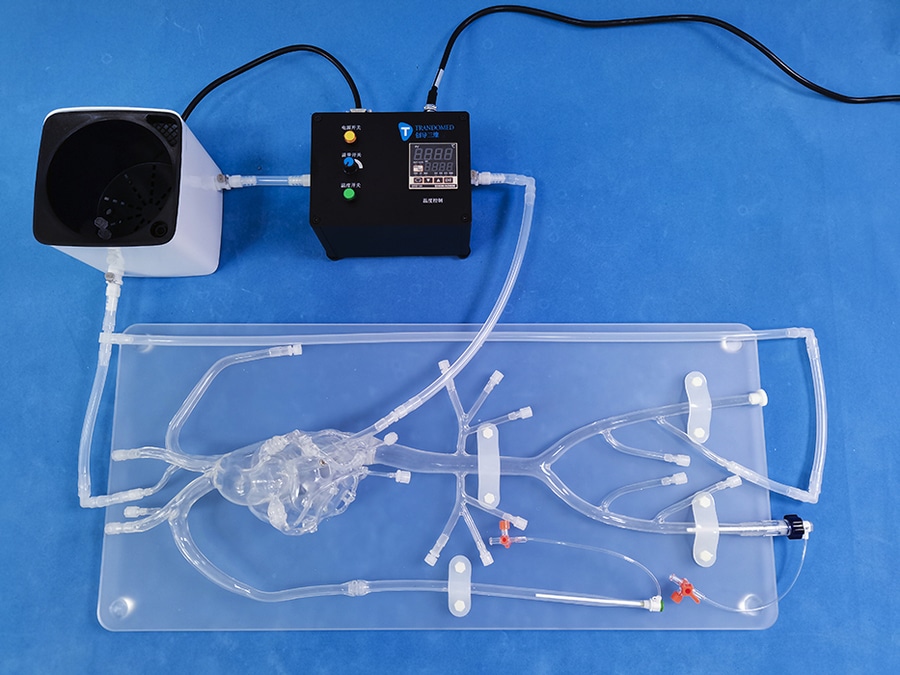
#Industry News
Advancements in the Treatment of Coronary Artery Disease
Detachable Coronary Model
Coronary artery intervention is a vital procedure in the field of cardiology that has revolutionized the treatment of coronary artery disease (CAD). CAD is a prevalent cardiovascular condition characterized by the narrowing or blockage of the coronary arteries, leading to reduced blood flow to the heart muscle. Coronary artery intervention plays a crucial role in restoring blood flow, relieving symptoms, and improving outcomes for patients with CAD. This article aims to provide an overview of coronary artery intervention, including its indications, procedures, and advancements in the field.
Understanding Coronary Artery Disease (CAD)
a. Overview of Coronary Arteries:
Introduction to the coronary arteries and their role in supplying blood to the heart.
b. Pathophysiology of CAD
Explanation of the development and progression of CAD, including atherosclerosis, plaque formation, and plaque rupture.
c. Clinical Presentation of CAD
Common symptoms and signs of CAD, such as angina (chest pain), shortness of breath, and myocardial infarction (heart attack).
Indications for Coronary Artery Intervention
a. Symptomatic CAD
Importance of relieving symptoms and improving quality of life in patients with angina or other cardiac-related symptoms.
b. Acute Coronary Syndromes
Role of coronary artery intervention in the management of acute myocardial infarction (MI) or unstable angina.
c. High-Risk Anatomy
Discussion of anatomical considerations that may make a patient at high risk for adverse events, such as left main coronary artery disease or severe three-vessel disease.
Procedures for Coronary Artery Intervention
a. Angiography
Explanation of the diagnostic procedure used to visualize the coronary arteries and identify blockages or narrowing.
b. Percutaneous Coronary Intervention (PCI)
Overview of the primary interventional procedure used to treat CAD, including balloon angioplasty and stent placement.
c. Adjunctive Techniques:
Introduction to additional techniques used in conjunction with PCI, such as atherectomy, thrombectomy, and fractional flow reserve (FFR) measurements.
Advancements in Coronary Artery Intervention
a. Drug-Eluting Stents:
Discussion of the use of stents coated with medication to reduce the risk of restenosis (re-narrowing) and improve long-term outcomes.
b. Bioresorbable Vascular Scaffolds:
Overview of the evolving technology of absorbable stents, which gradually dissolve over time, potentially allowing the vessel to return to its natural state.
c. Chronic Total Occlusion Intervention:
Introduction to techniques used in addressing complete blockages within the coronary arteries, improving blood flow and symptom relief.
d. Intravascular Imaging:
Explanation of advanced imaging modalities, such as intravascular ultrasound (IVUS) and optical coherence tomography (OCT), aiding in precise stent placement and assessing treatment success.
Complications and Considerations in Coronary Artery Intervention
a. Periprocedural Complications
Potential risks associated with coronary artery intervention, including bleeding, vascular injury, and contrast-induced nephropathy.
b. Restenosis and Late Stent Thrombosis:
Understanding the challenges of stent re-narrowing and clot formation, along with strategies to minimize their occurrence.
c. Patient Selection and Risk Assessment:
Importance of comprehensive evaluation, risk stratification, and shared decision-making in selecting suitable candidates for intervention.
Conclusion
Coronary artery intervention has significantly improved the outcomes for patients with CAD by restoring blood flow and relieving symptoms. Advancements in techniques, devices, and imaging modalities have made the procedures safer, more effective, and increasingly personalized. The ongoing research and development in the field of coronary artery intervention continue to broaden the treatment options, enhance patient outcomes, and shape the future of cardiovascular medicine.





